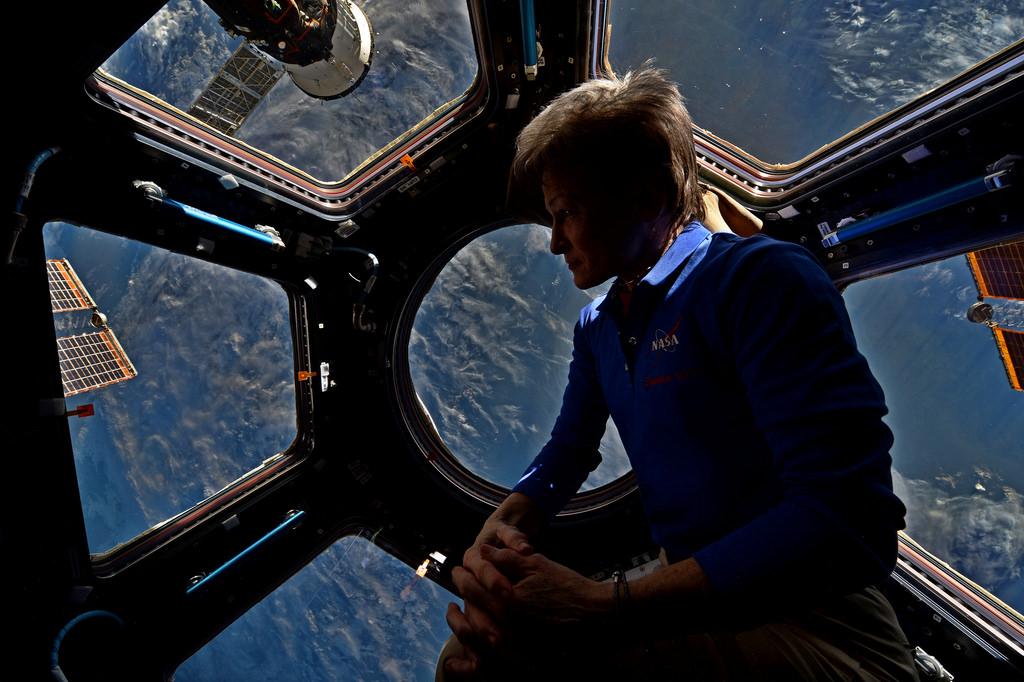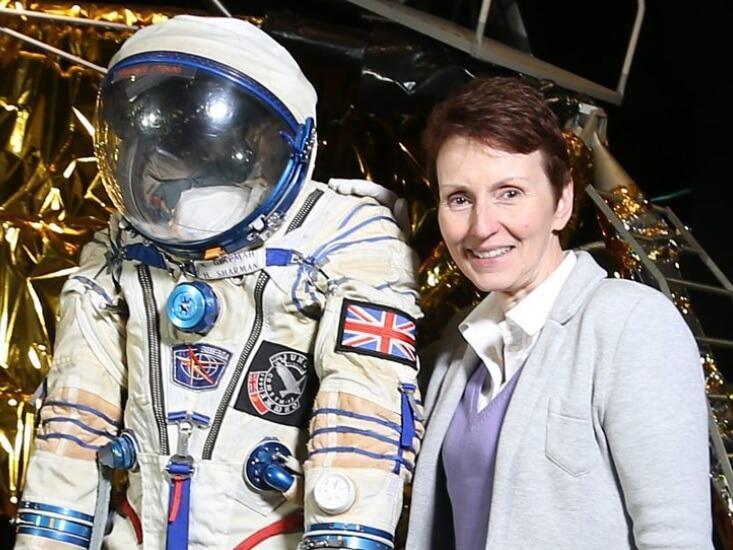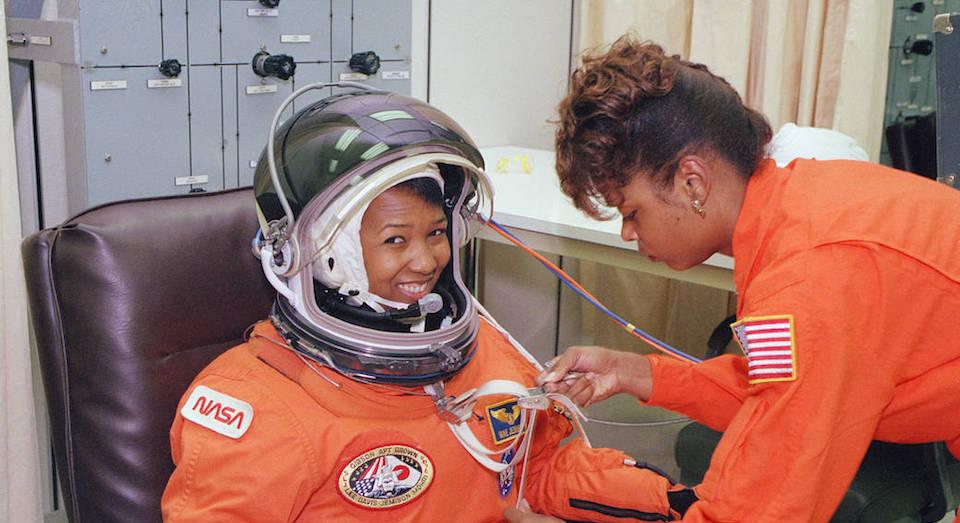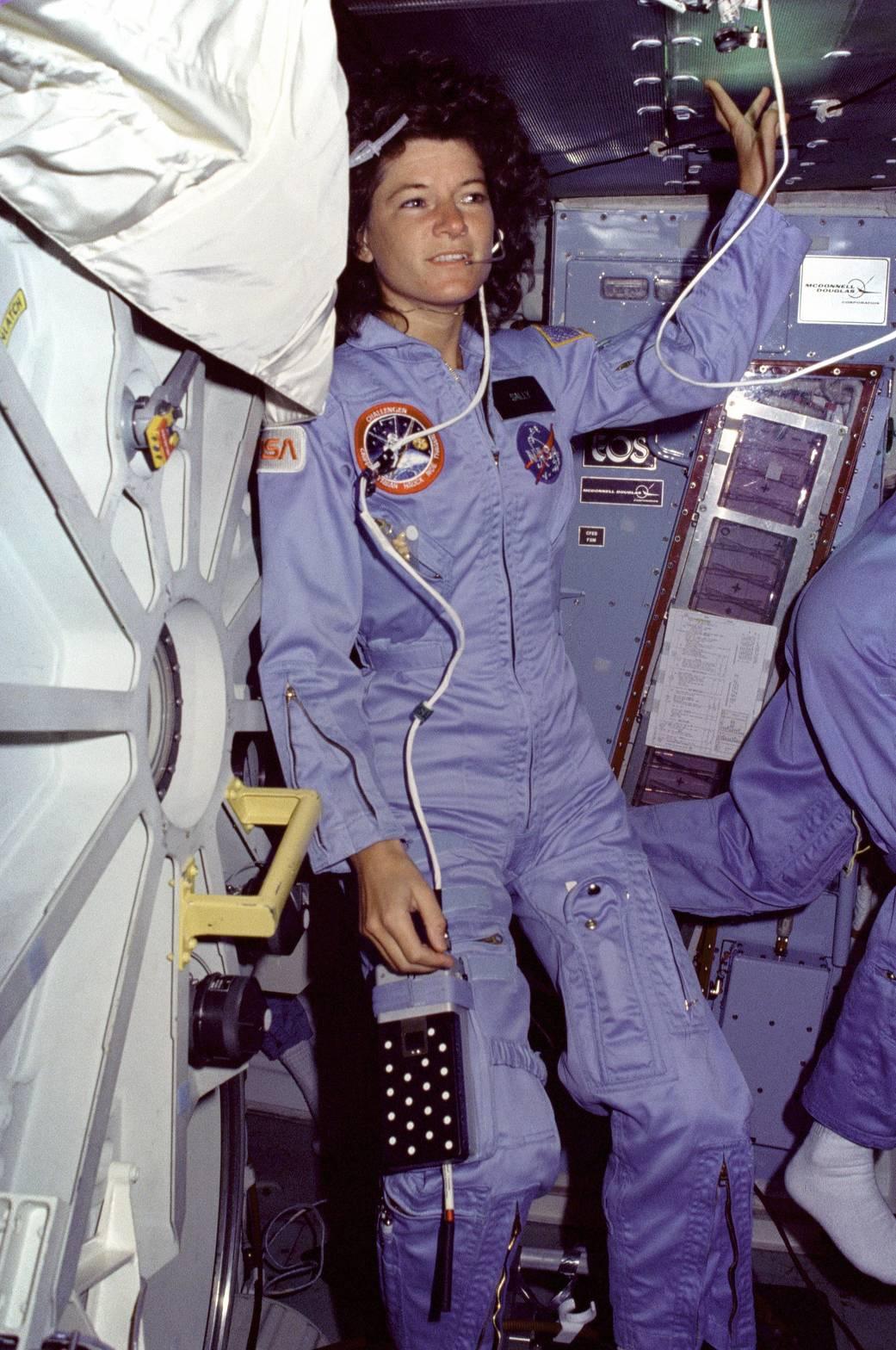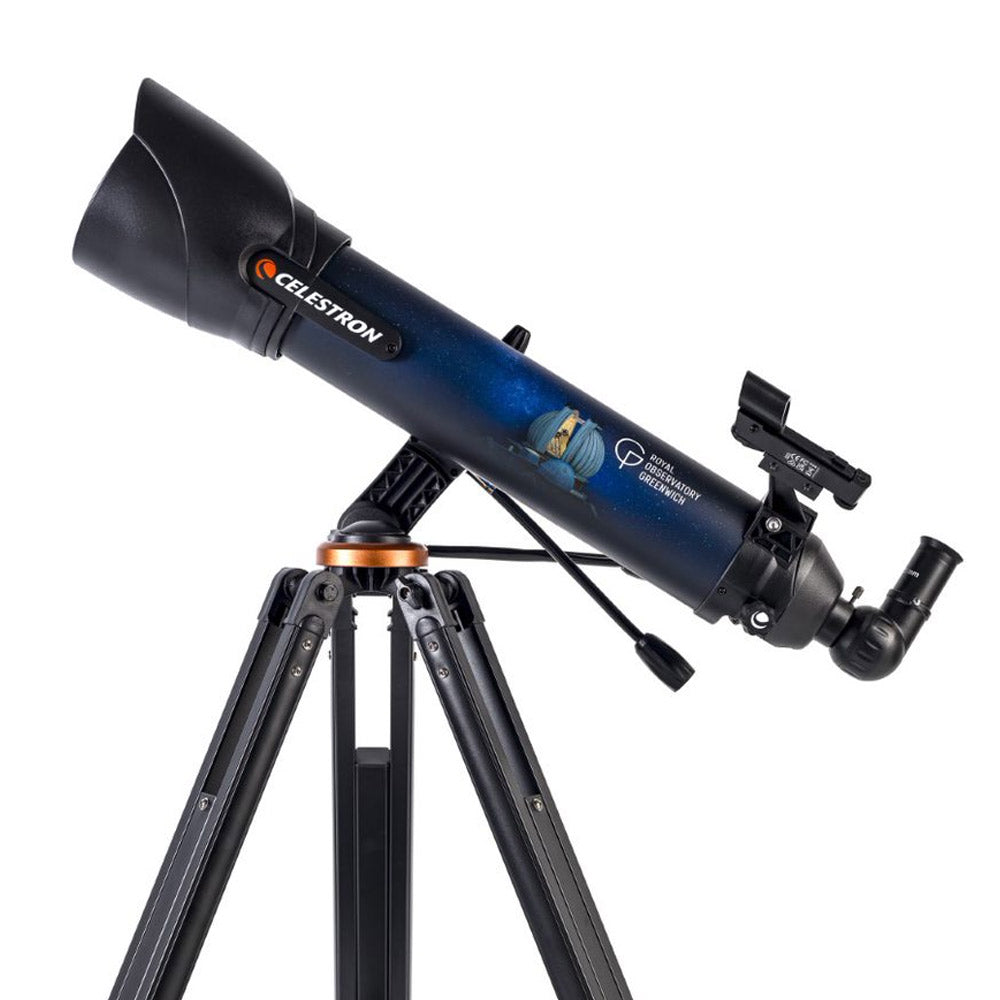
We know the names of the first men in space, and on the Moon - but what about the women?
Who was the first woman in space?
The first woman to travel in space was Soviet cosmonaut, Valentina Tereshkova. On 16 June 1963, Tereshkova was launched on a solo mission aboard the spacecraft Vostok 6. She spent more than 70 hours orbiting the Earth, two years after Yuri Gagarin’s first human-crewed flight in space.
Tereshkova was born on 6 March 1937 in the village of Bolshoye Maslennikovo in central Russia. Her mother was a textile worker, and her father was a tractor driver who was later recognised as a war hero during World War Two. At the time of his death on the Finnish front, Tereshkova was only two years old.
After leaving school, Tereshkova followed her mother into work at a textile factory. Her first appreciation of flying was going down rather than up when she joined a local skydiving and parachutist club. It was her hobby of jumping out of planes that appealed to the Soviets' space programme committee. On applying to the cosmonaut corps, Tereshkova was eventually chosen from more than 400 other candidates.
Tereshkova received 18 months of severe training with the Soviet Air Force after her selection. These tests studied her abilities to cope physically under the extremes of gravity, as well as handle challenges such as emergency management and the isolation of being in space alone. At 24 years old, she was honourably inducted into the Soviet Air Force. Tereshkova still holds the title as the youngest woman, and the first civilian to fly in space.
While Tereshkova remains the only woman to have flown solo in space, her mission was a dual flight. Fellow cosmonaut Valeriy Bykovsky launched on Vostok 5 on 14 June 1963. Two days later, Tereshkova launched. The two spacecraft took different flight paths and came within three miles of each other. The cosmonauts exchanged communications while making 48 orbits of Earth, with Tereshkova responding to Bykovsky via her callsign ‘Seagull’. During the flight, the Soviet state television network broadcast a video of Tereshkova inside the capsule, and she spoke with the Russian Premier Nikita Khrushchev over the radio.
In her later life, Tereshkova was decorated with prestigious medals and has held several prominent political positions both for the Russian and global councils. Before the collapse of the Soviet Union, she was an official head of State and was elected a member of the World Peace Council in 1966.
Today, she holds the position of Deputy Chair for the Committee for International Affairs in Russia. She also remains active within the space community and is quoted as suggesting that she would like to fly to Mars - even if it were a one-way trip.
The first female astronauts
In 1963, Tereshkova became the first woman in space, just two years after Yuri Gagarin became the first human in space.
However, as the investment in the space programmes grew, so did the gender gap. It took another 19 years until Soviet cosmonaut Svetlana Savitskaya, aboard the Soyuz T-7 mission in 1982, became the second woman to travel into space.
Savitskaya returned on a 1984 mission to become the first woman to fly to space twice, and the first woman to perform a spacewalk.
While over 500 people have flown in space, to date, only 11% of them have been women. Nearly all of these women flew in the NASA program, and the rest were in the Soviet/Russian and Chinese space programmes.
In terms of numbers, the U.S. has sent the most women into space. Since 1961, a total of 50 female astronauts have flown with NASA, including Peggy Whitson who currently holds the American record for most consecutive days in space. However, it’s the percentages that highlight the male and female divide, with women accounting for just 14% of all Americans sent to space.
The first class of NASA astronauts to include females was selected in 1978. While Sally Ride eventually became the first American woman to fly to space, her classmates including Shannon Lucid, Judith Resnik, and Anna Lee Fisher (who became the first mother in space) also went on to make their mark.
The first British woman in space
Helen Patricia Sharman (b. 30 May 1963) is a chemist and technologist who became the first British astronaut in space and the first woman to visit the Mir space station in 1991.
Sharman was chosen as a candidate after answering a radio advert asking for British astronaut applicants with “no experience necessary.” Despite the advert's rather simple request, the selection criteria were considerably rigorous. Helen’s background in chemistry, her competence for foreign languages and her high level of fitness determined Sharman's selection ahead of nearly 13,000 applicants. She was picked live on British television on 25 November 1989.
Sharman was selected as one of only two candidates to undertake the full-time astronaut training at Moscow’s Star City. The space programme was known as Project Juno and was a collaboration between the Soviet Union and British space programmes.
The Soyuz mission, which included Soviet cosmonauts Anatoly Artsebarsky, Sergei Krikalev and Sharman, launched into space on 18 May 1991 and spent eight days in orbit. Sharman's time aboard the Mir involved several medical and agricultural experiments and taking photographs of the British Isles from the station.
At the time of launch, Sharman was nearly 28 years old, making her one of the youngest individuals to have flown in space.
First African American woman in space
Mae Carol Jemison (b. 17 October 1956) is an American engineer, biologist and NASA astronaut. She became the first African American woman in space when she went into orbit aboard the Space Shuttle Endeavour on 12 September 1992.
Mae Jemison applied to NASA’s space program in 1983 after being inspired by Sally Ride’s mission. She joined NASA in 1987 and was selected as one of 15 candidates chosen from over 2,000 applicants.
On the Space Shuttle Endeavour, Jemison worked on bone cell research experiments. She left NASA in 1993 to pursue how social sciences interact with technology, a field she continues in as Professor with Cornell University and through several of her own companies.
First American woman in space
Sally Ride (26 May 1951 - 23 July 2012) was an American astronaut, physicist and engineer who made history for the Western world when she became the first American woman to enter space, piloting the Space Shuttle Challenger in 1983.
Born in Los Angeles, Ride joined NASA in 1978 and is the third woman in space overall, after USSR cosmonauts Valentina Tereshkova (1963) and Svetlana Savitskaya (1982). To date, she also remains the youngest American astronaut to have travelled to space, having done so at the age of 32. Furthermore, Ride is the first known LGBT astronaut.
While Sally Ride was the first American woman in space, she is also known as the 'first female astronaut in space'. This is because of the distinction between the different nations' definition of a space traveller: Cosmonaut (Soviet/Russian) and Astronaut (American).
Ride held many prominent positions within academia such as Cornell University and the University of California. She also started several organisations to promote STEM education (science, technology, engineering and mathematics). Ride often spoke about the barriers she faced due to her gender. NASA engineers at the time developed a makeup kit that could be used in space, assuming this was an essential item for female astronauts such as Ride.
Ride passed away in 2012 17 months after being diagnosed with pancreatic cancer.
The first Indian woman in space
Kalpana Chawla (17 March 1962 – 1 February 2003) was an American astronaut and engineer. She was the first woman of Indian origin to go to space and the second person from India to fly in space.
Chawla served in NASA as a mission specialist and robotic arm operator on the Space Shuttle Columbia. The flight launched on 17 November 1997, and she remained in space for 15 days and 12 hours.
Six years after her first flight, she took her second trip aboard the Space Shuttle Columbia, which ended in disaster. On 1 February 2003, the craft disintegrated on re-entering the Earth's atmosphere, killing all seven crew members including Kalpana. With her two missions, Kalpana logged over a month in space.
Find out about Kalpana Chawla's connection to Deep Purple
What year was the first woman in space?
On 16 June 1963, Soviet Cosmonaut Valentina Tereshkova became the first woman to travel into space. The launch took place at the Baikonur Cosmodrome in southern Kazakhstan - the spaceport for both Sputnik 1, and Vostok 1, the first human spaceflight.
Initially, the flight was planned for several months earlier. However, this flight plan was delayed to carry Valery Bykovsky, a part of a joint mission.
After 48 orbits and 71 hours aboard the Vostok 6, Tereshkova piloted her spacecraft back into the Earth’s atmosphere and parachuted to Earth, landing in Bayevo, Altai Krai. At the landing site, a statue was erected of Tereshkova floating on a curved platform as if floating in space.
Margaret Hamilton - NASA computer pioneer
Margaret Heafield Hamilton (b. 17 August 1936) is an American computer scientist. She is credited with leading the development of the onboard flight software for NASA's Apollo space program and the coding which was instrumental for the Apollo 11 mission and the US Moon landing.
After graduating from Earlham College and Brandeis University in Mathematics, Hamilton joined the Massachusetts Institute of Technology (MIT) in 1960. Here she was employed as one of the designers of an anti-aircraft defence program and was later asked to join NASA to develop the software for the Apollo space programme. By 1965, Hamilton was placed in command of the inflight software of the Apollo space program, and three years later, she had a team of 400 people working alongside her on the software design.
The expertly designed Apollo software meant that it could perform more tasks than the initial brief requested. The system was composed of thousands of lines of code, identifying and prioritising various problems and solving them through a set of recovery programs. This was an essential development for ground control and the pilots of the Apollo 11 mission in choosing whether to land or not to land, based on the priority alarms.
The software proved so successful in the Apollo missions that NASA used the systems in many of their later projects, including the Skylab space station project.
Katherine Johnson - NASA mathematician
Katherine Johnson (26 August 1918 – 24 February 2020) was an African-American mathematician. Her calculations influenced every major NASA space program. In 1961, she calculated the launch window flight path for Alan Shepard, the first American in space. She was also instrumental in plotting the trajectories for John Glenn, the first American in orbit. Her computations were also essential in understanding the timing for launches including Apollo 11’s mission to the Moon.
Women in space today
First woman on the Moon
In October 2019, NASA revealed the two spacesuits that the first woman to walk on the Moon would wear. One, a white and blue spacesuit, is to be worn on the lunar surface itself. It has been designed to be flexible, to allow astronauts to move easily on the Moon. The second, an orange pressure suit, will be worn by astronauts when launched into space in the Orion capsule, and on their return to Earth.
The first all-female spacewalk
NASA astronauts Christina Koch and Jessica Meir conducted the first all-female spacewalk on Friday 18 October 2019. While women have been performing spacewalks since the 1980s (read more below), this was the first time that an all-female crew had performed the operation. The mission included repairing a faulty power unit on the International Space Station.
First operational crewed SpaceX flight to the ISS
In March 2020 NASA announced that it had assigned Shannon Walker to the first operational crewed flight of the SpaceX Crew Dragon spacecraft on a mission to the International Space Station.
Walker will join fellow astronauts Michael Hopkins and Victor Glover Jr from NASA and Soichi Noguchi from the Japanese Aerospace Exploration Agency, on a six-month expedition aboard the ISS.
Walker previously spent 163 days as a flight engineer on the ISS in 2010.

